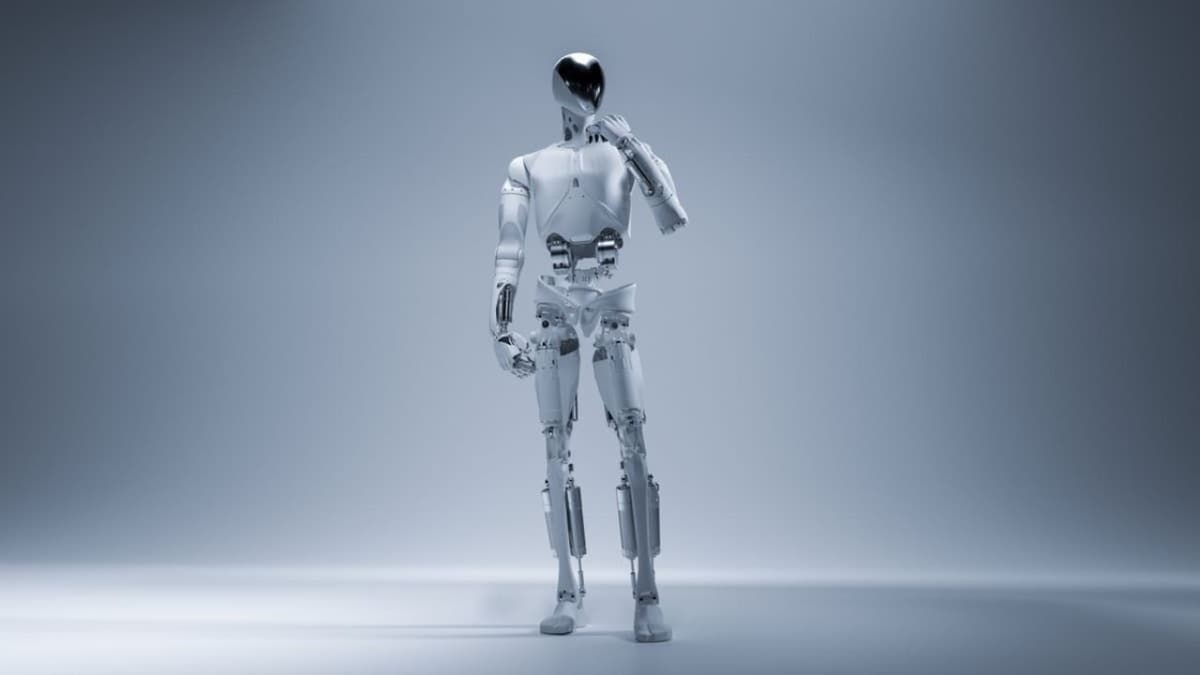Ohio lawmaker proposes comprehensive ban on marrying AI systems and granting legal personhood

NEWYou can now listen to Fox News articles!
An Ohio lawmaker is taking aim at artificial intelligence in a way few expected. Rep. Thaddeus Claggett has introduced House Bill 469, which would make it illegal for AI systems to be treated like people. The proposal would officially label them as “nonsentient entities,” cutting off any path toward legal personhood.
And yes, it also includes a ban on marrying AI.
Claggett, a Republican from Licking County and chair of the House Technology and Innovation Committee, said the measure is meant to keep humans firmly in control of machines. He says that as AI systems begin to act more like humans, the law must draw a clear line between person and program.
TEENS TURNING TO AI FOR LOVE AND COMFORT
Sign up for my FREE CyberGuy Report
Get my best tech tips, urgent security alerts and exclusive deals delivered straight to your inbox. Plus, you’ll get instant access to my Ultimate Scam Survival Guide — free when you join my CYBERGUY.COM newsletter
What Ohio’s AI marriage ban would do
Under the proposed legislation, AI systems would not be able to own property, manage bank accounts or serve as company executives. They would not have the same rights or responsibilities as people. The bill also makes any marriage between a human and an AI, or between two AI systems, legally impossible.
Claggett believes the concern is not about robot weddings happening anytime soon. Instead, he wants to prevent AI from taking on the legal powers of a spouse, such as holding power of attorney or making financial and medical decisions for someone else.
The bill also specifies that if an AI causes harm, the human owners or developers would be responsible. That means a person cannot blame their chatbot or automated system for mistakes or damage. Responsibility stays with the humans who built, trained or used the system.
Why Ohio is taking action on AI personhood
The timing of the bill is not random. AI is spreading fast across nearly every industry. Systems now write reports, generate artwork and analyze complex data at lightning speed. Ohio has even started requiring schools to create rules for AI use in classrooms. And major data centers are being built to power AI infrastructure in the state.
At the same time, AI is becoming more personal. A survey by Florida-based marketing firm Fractl found that 22 percent of users said they had formed emotional connections with a chatbot. Three percent even considered one a romantic partner. Another 16 percent said they wondered whether the AI they were talking to was sentient.
That kind of emotional attachment raises red flags for lawmakers. If people start believing AI has feelings or intent, it blurs the boundaries between human experience and digital simulation.

AI COMPANIONS REPLACE REAL FRIENDS FOR MANY TEENS
The bigger picture: Keeping humans in control
Claggett said the bill is about protecting human agency. He believes that as AI grows smarter and more capable, it must never replace the human decision-maker.
Claggett told CyberGuy, “We see AI as having tremendous potential as a tool, but also tremendous potential to cause harm. We want to prevent that by establishing guardrails and a legal framework before these developments can outpace regulation and bad actors start exploiting legal loopholes. We want the human to be liable for any misconduct, and for there to be no question regarding the legal status of AI, no matter how sophisticated, in Ohio law.”
The proposed law would also reinforce that AI cannot make choices that affect human lives without oversight.
If passed, it would ensure that no machine can act independently in matters of marriage, property, or corporate leadership. Supporters see the bill as a safeguard for society, arguing that technology should never gain the same legal footing as people.
Critics, however, say the proposal might be a solution to a problem that doesn’t yet exist. They warn that overly broad restrictions could slow down AI research and innovation in Ohio.
Still, even skeptics admit that the conversation is necessary. AI is evolving faster than most laws can keep up, and questions about rights, ownership and accountability are becoming harder to ignore.
What other states are doing about AI personhood
Ohio isn’t alone in pushing back against AI personhood. In Utah, lawmakers passed H.B. 249, the Utah Legal Personhood Amendments, which prohibits courts and government entities from recognizing legal personhood for nonhuman entities, including AI. The law also bars recognizing personhood for entities such as bodies of water, land and plants.
In Missouri, legislators introduced H.B. 1462, the “AI Non-Sentience and Responsibility Act,” which would formally declare AI systems non-sentient and prevent them from acquiring legal status, marriage rights, corporate roles or property ownership.
AI-GENERATED ATTORNEY OUTRAGES JUDGE WHO SCOLDS MAN OVER COURTROOM FAKE: ‘NOT A REAL PERSON’
In Idaho, H.B. 720 (2022) includes language that reserves legal rights and personhood for human beings, effectively barring personhood claims by nonhumans, including AI.
These measures reflect a broader trend among state governments. Many legislators are trying to get ahead of AI’s development by setting clear legal boundaries before the technology becomes more advanced.
Taken together, these proposals show that Ohio’s effort is part of a larger national movement to define where technology ends and legal personhood begins.

What this means for you
If you live in Ohio, House Bill 469 could influence how you use and interact with artificial intelligence. It sets clear boundaries that keep AI as a tool rather than a person. By keeping decision-making and responsibility in human hands, the law aims to avoid confusion about who is accountable when technology fails. If an AI system causes harm or makes an error, the responsibility stays with the humans who designed or deployed it.
For Ohio businesses, this proposal could lead to real changes in daily operations. Companies that depend on AI to handle customer support, financial decisions, or creative projects may need to review how much authority those systems have. It may also require stricter policies to ensure that a human is always supervising important decisions involving money, health, or law. Lawmakers want to keep people firmly in charge of choices that affect others.
For everyday users, the message is straightforward. AI can be useful, but it cannot replace human relationships or legal rights. This bill reinforces that no matter how human-like technology appears, it cannot form genuine emotional or legal bonds with people. Conversations with chatbots might feel personal, but they remain simulations created through data and programming.
DETAILS OF TRUMP’S HIGHLY ANTICIPATED AI PLAN REVEALED BY WHITE HOUSE AHEAD OF MAJOR SPEECH
For people outside Ohio, this proposal could point to what is coming next. Other states are closely watching how the bill develops, and some may adopt similar laws. If it passes, it could set a national example for defining the legal limits of artificial intelligence. What happens in Ohio may shape how courts, businesses and individuals across the country decide to manage their connection to AI in the years ahead.
In the end, this debate is not limited to one state. It raises an important question about how society should balance the power of innovation with the need to protect human control.
Take my quiz: How safe is your online security?
Think your devices and data are truly protected? Take this quick quiz to see where your digital habits stand. From passwords to Wi-Fi settings, you’ll get a personalized breakdown of what you’re doing right and what needs improvement. Take my Quiz here: Cyberguy.com
Kurt’s key takeaways
Ohio’s House Bill 469 is bold, controversial and timely. It challenges us to define the limits of what technology should be allowed to do. Claggett’s proposal is not about stopping innovation. It’s about ensuring that as machines become more capable, humans remain in charge of the choices that shape society. The debate is far from over. Some see this as a necessary safeguard, while others believe it underestimates what AI can contribute. But one thing is certain: Ohio has thrown a spotlight on one of the biggest questions of our time.
How far should the law go in deciding what AI can never be? Let us know by writing to us at Cyberguy.com
Sign up for my FREE CyberGuy Report
Get my best tech tips, urgent security alerts and exclusive deals delivered straight to your inbox. Plus, you’ll get instant access to my Ultimate Scam Survival Guide — free when you join my CYBERGUY.COM newsletter
Copyright 2025 CyberGuy.com. All rights reserved.
Read the full article here









